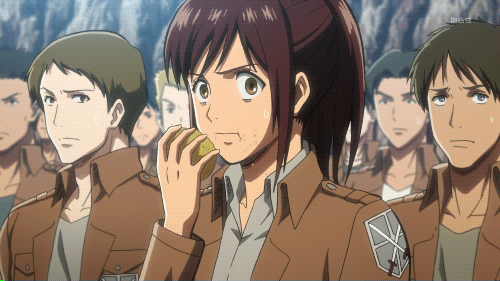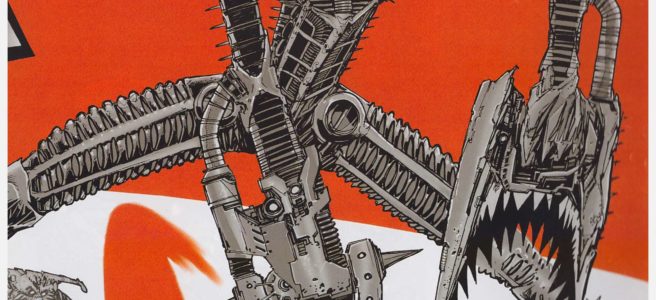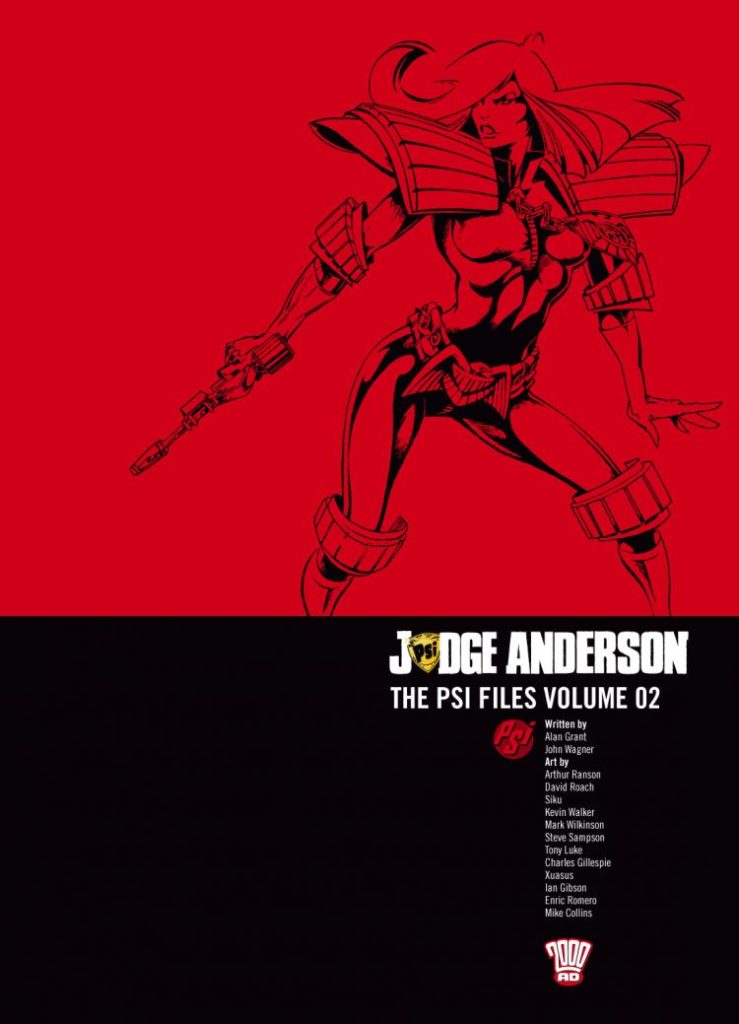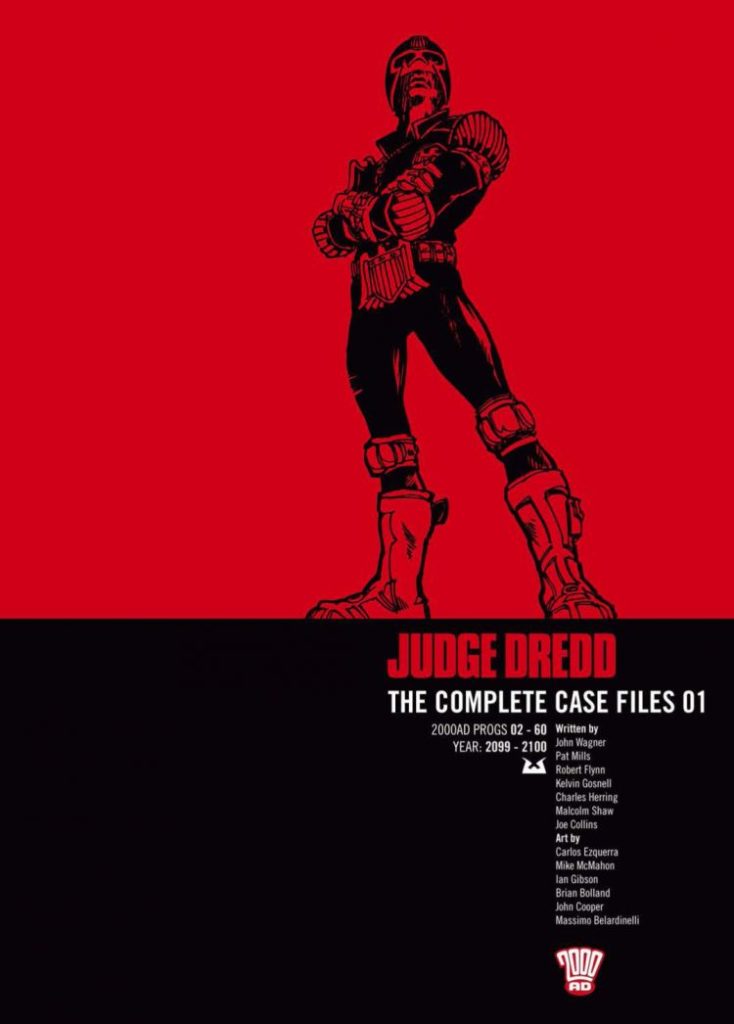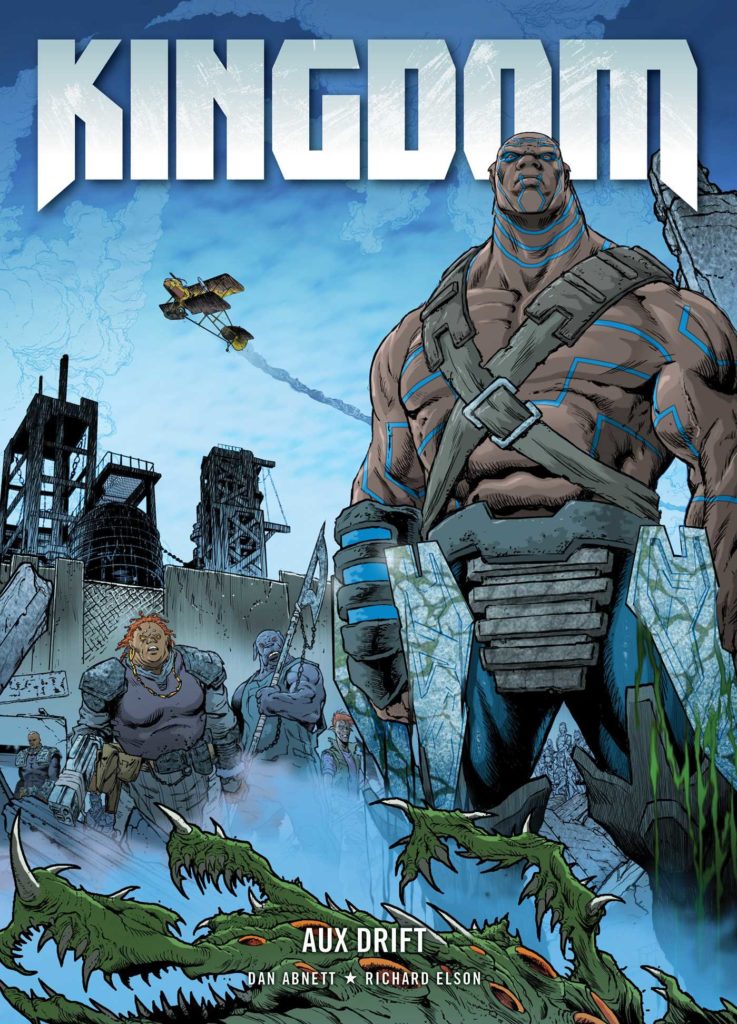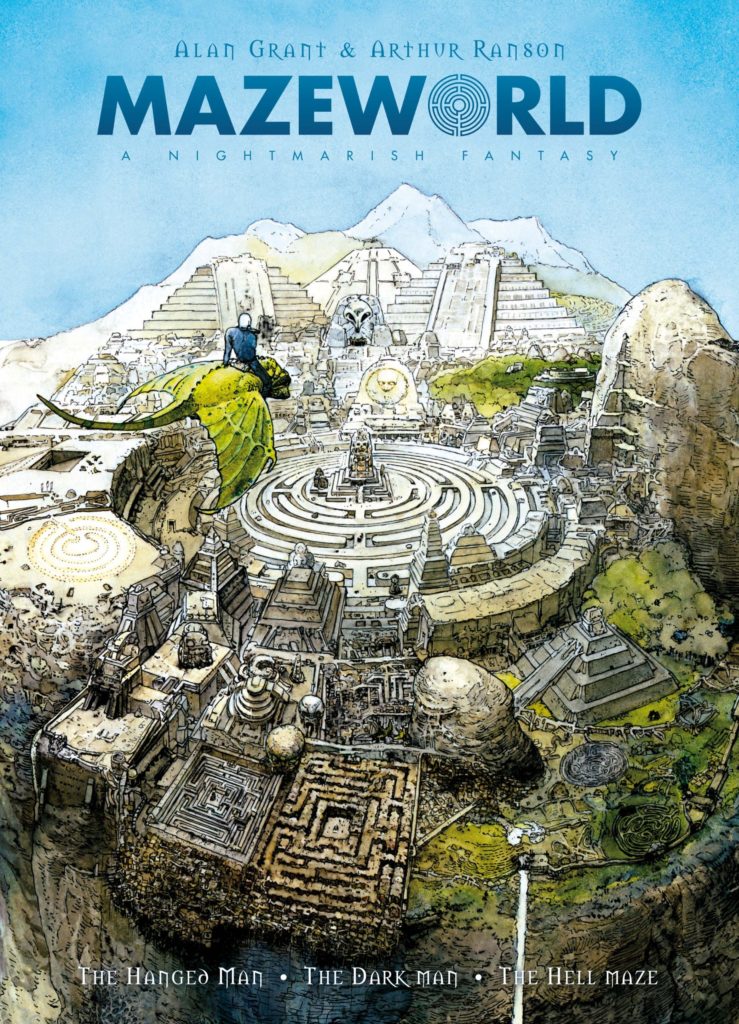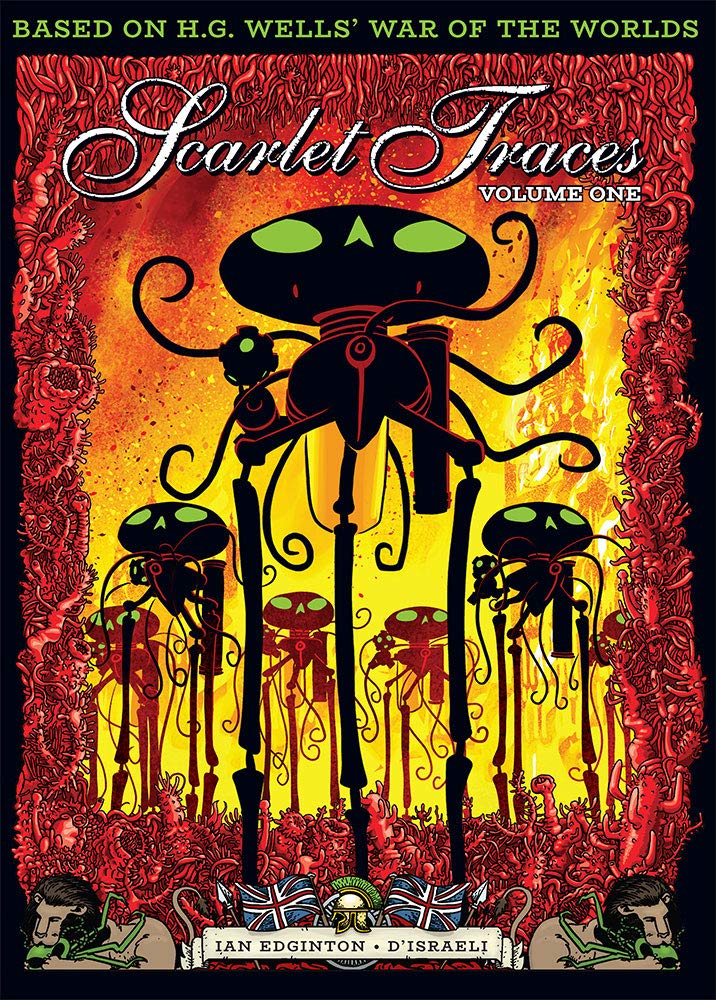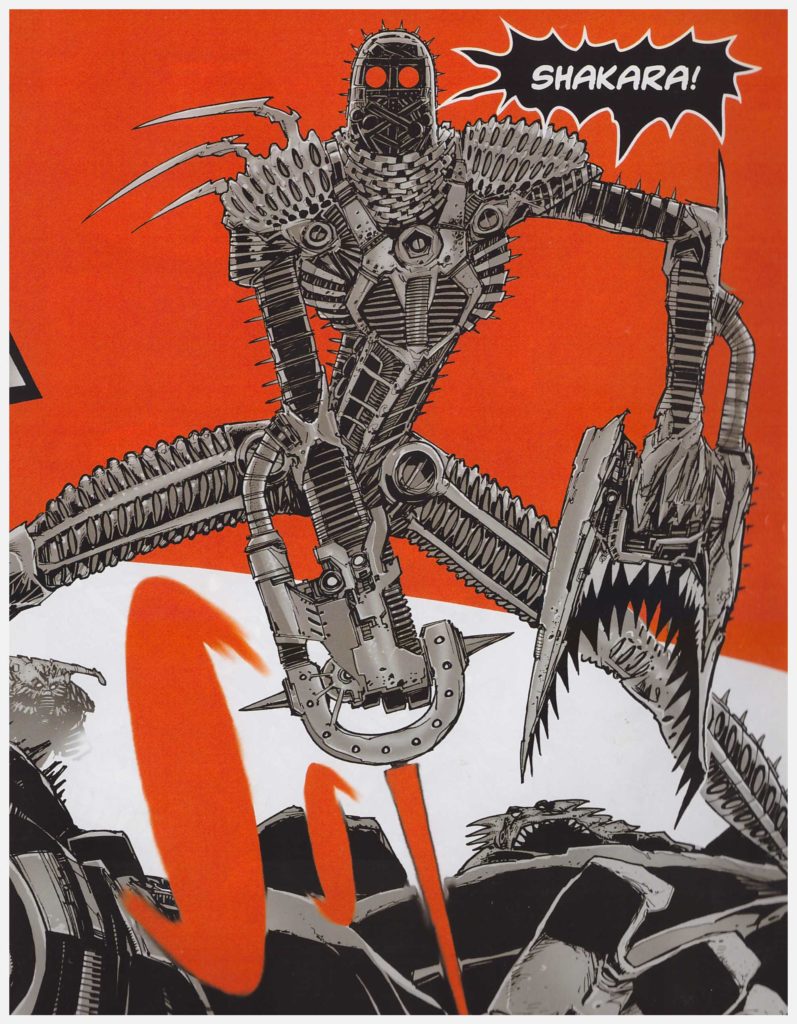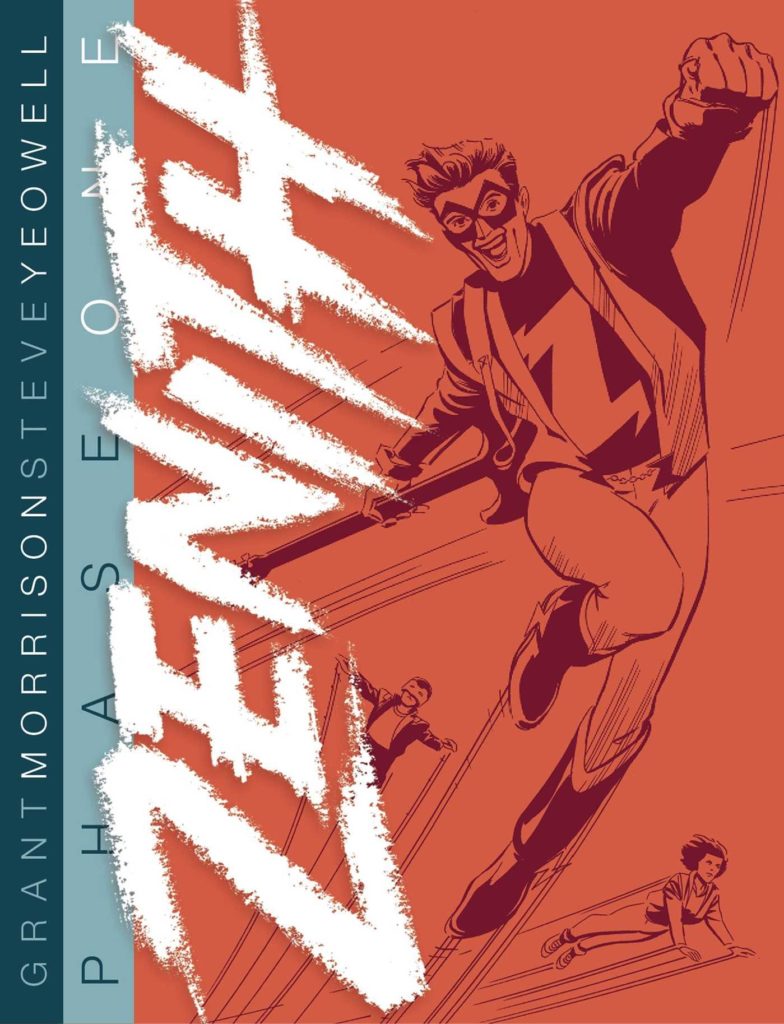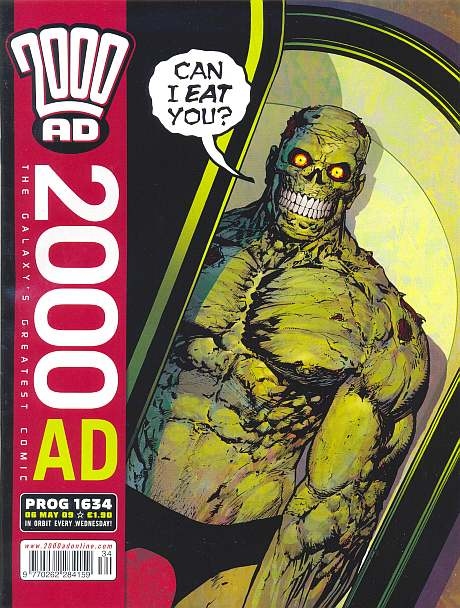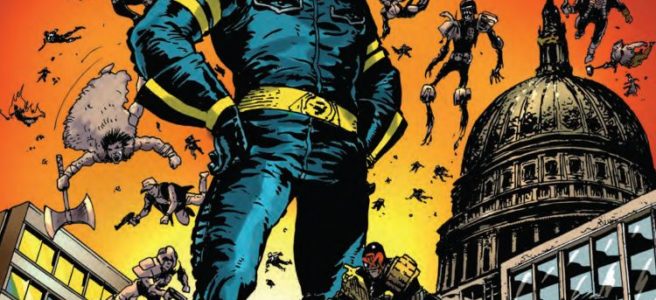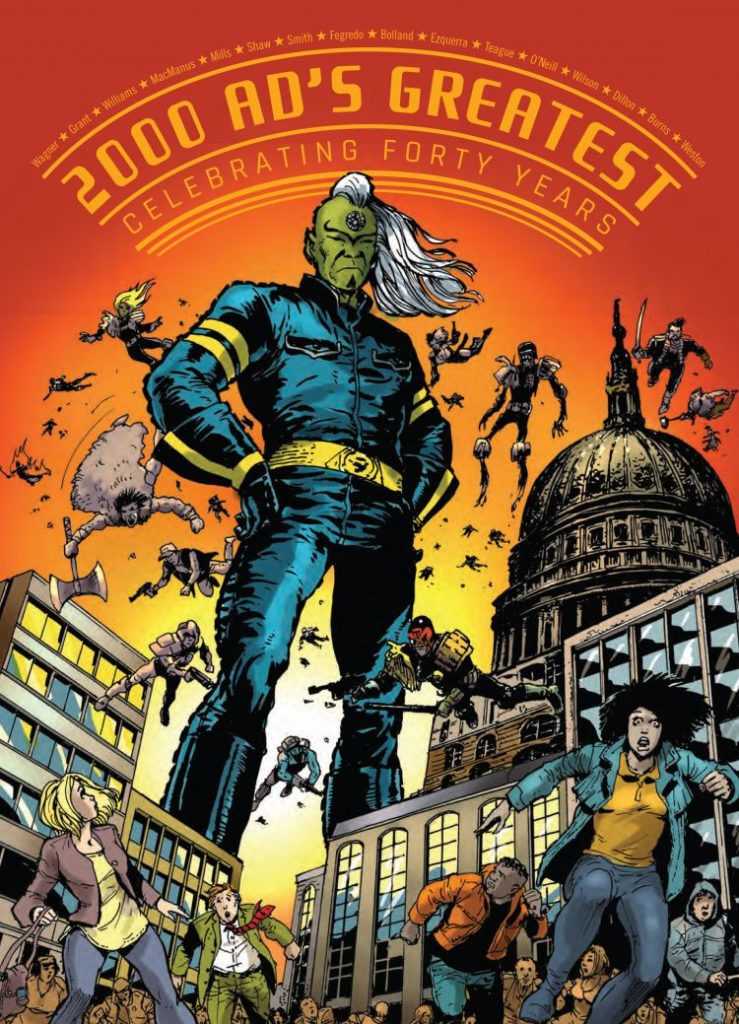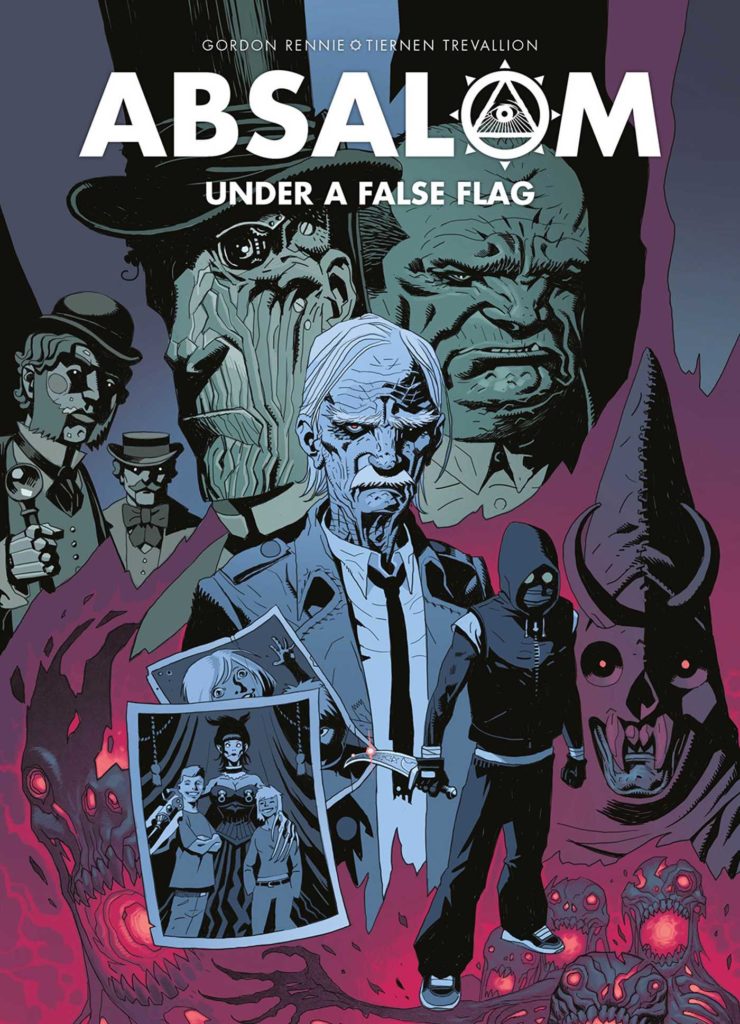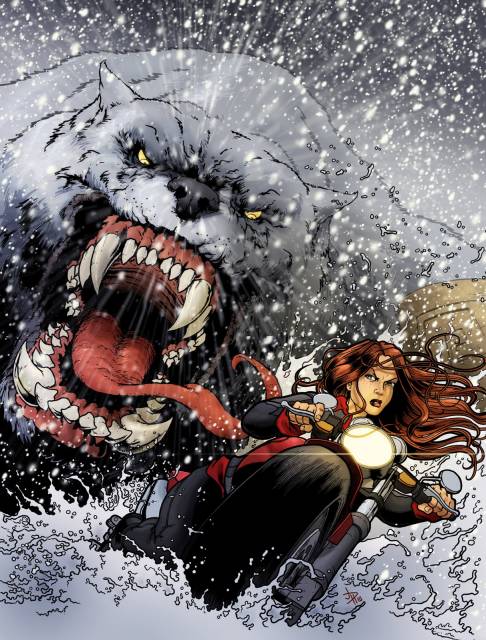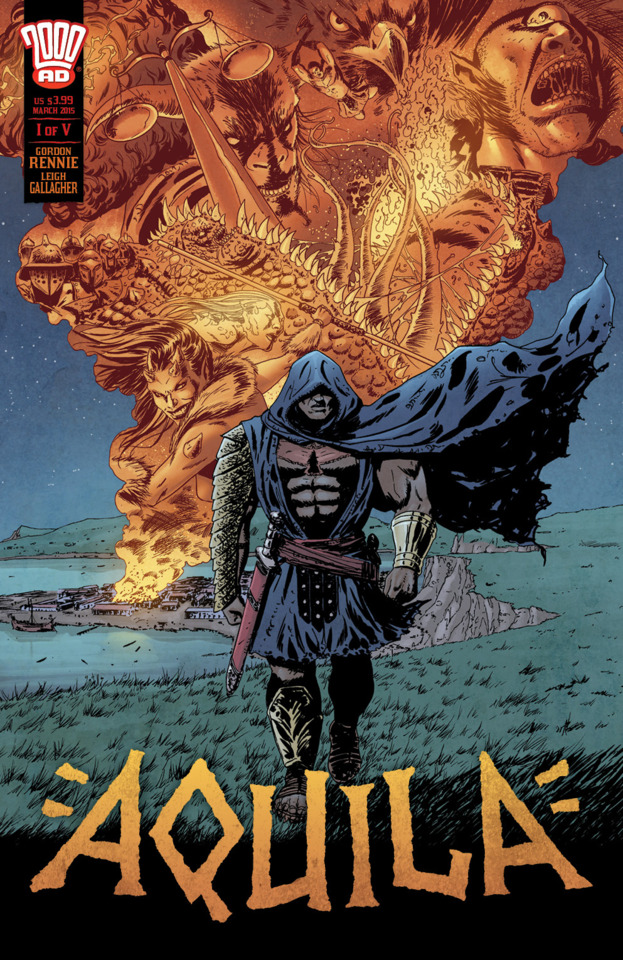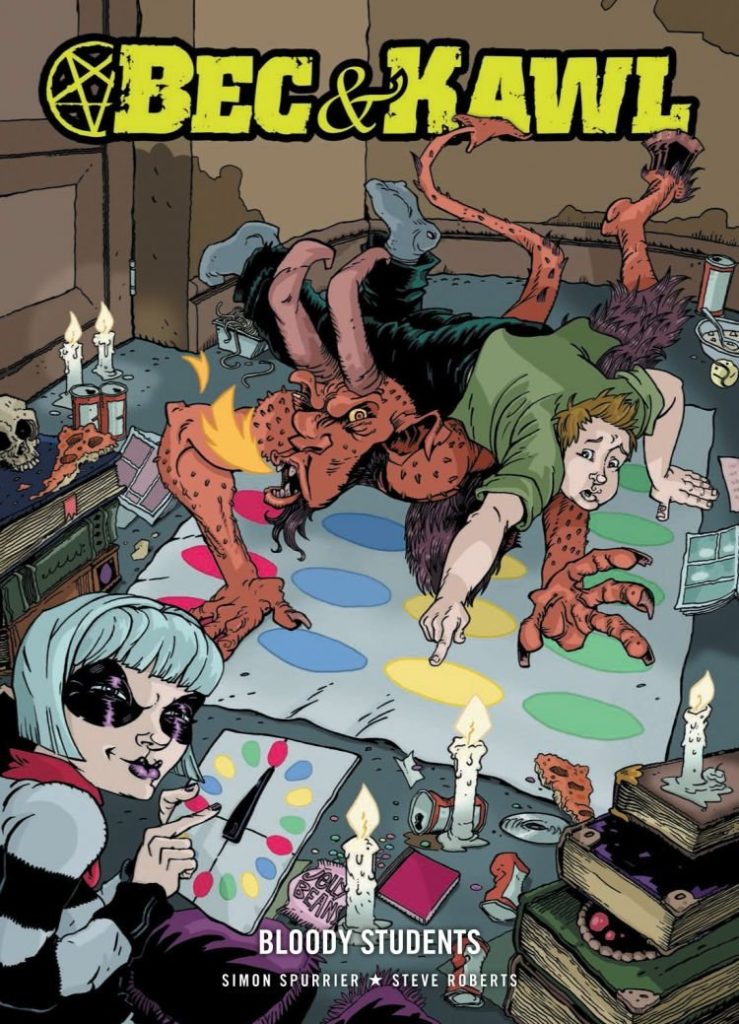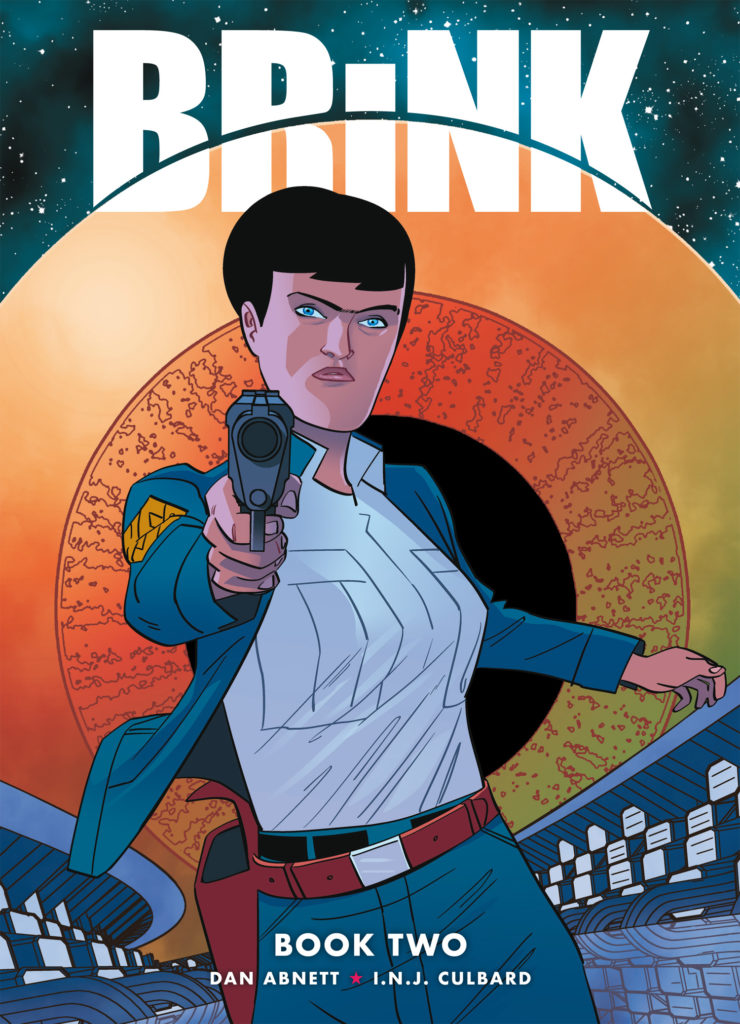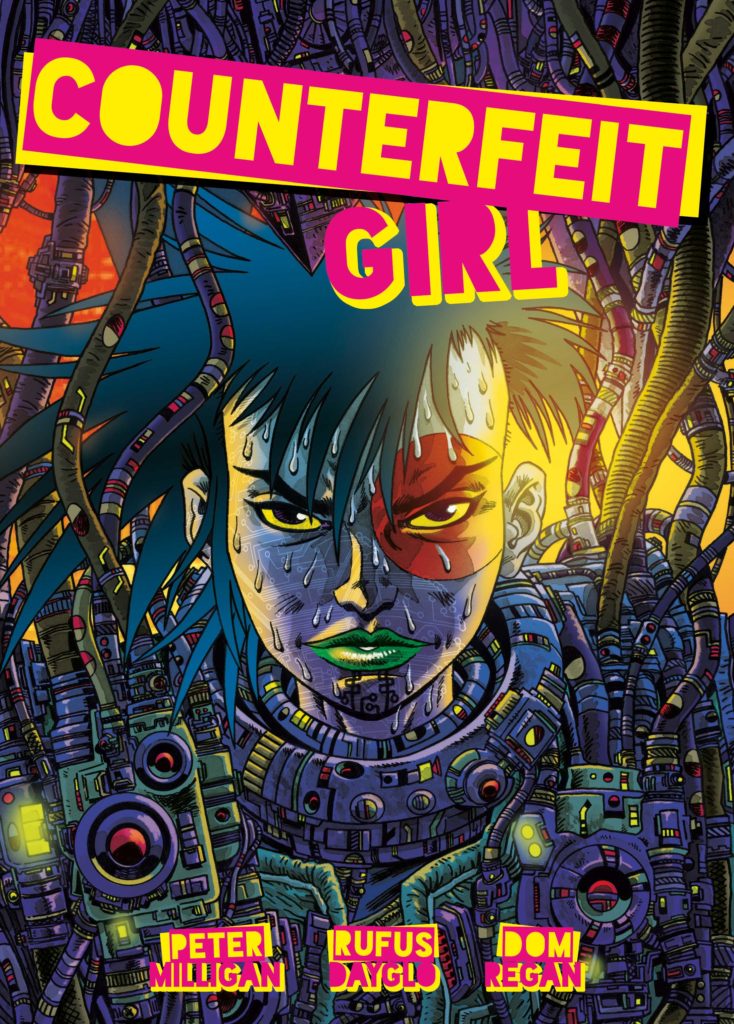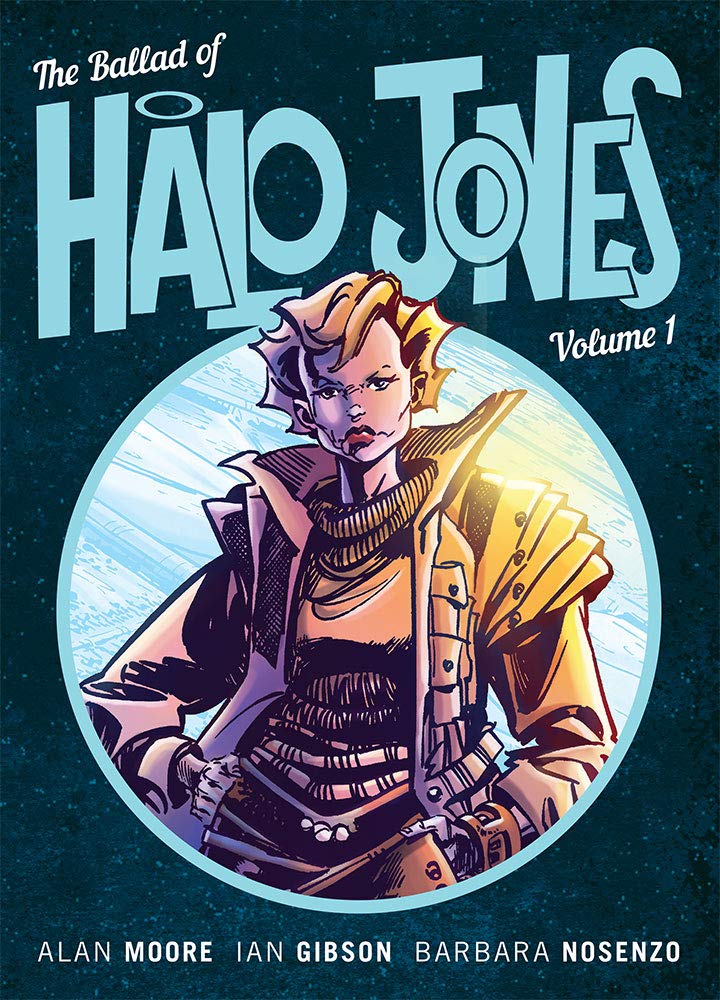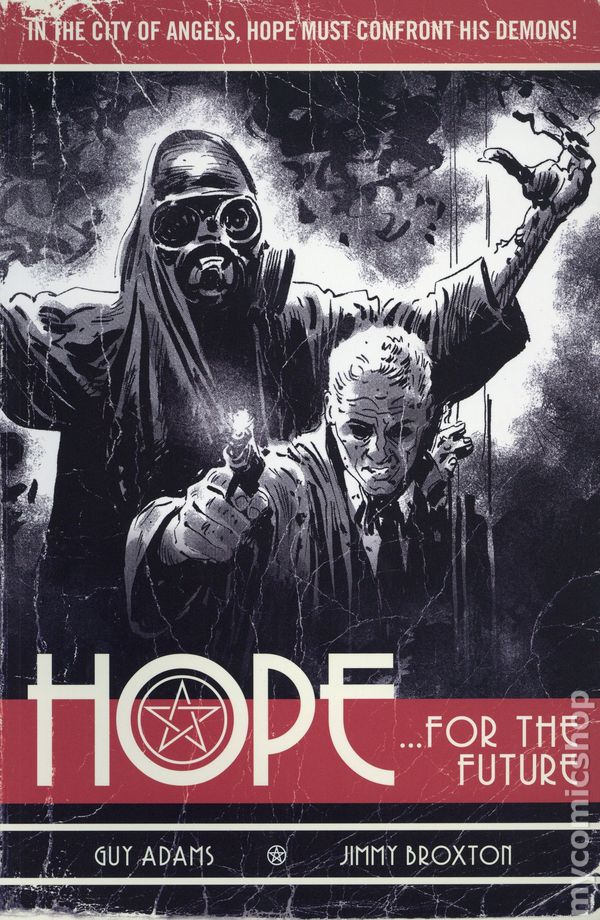Attack on Titan is one of those blockbuster series that you can expect even the most casual manga/anime fan to enjoy, up there with Death Note, Sword Art Online and Full Metal Alchemist, among others. However, like Death Note, I have never understood the praise this series has gotten – with both of these series, it’s almost like people are in love with the fantastic premises more than the actual execution. I watched the first two seasons of the anime when they came out and was initially intrigued, but soon lost interest due to the glacial pacing and wasted characters, to the point where I dropped off entirely a couple episodes into season three. That said, I knew that there were big, interesting developments as the story went along and so when Humble Bundle were offering 26 volumes of the manga (plus a ton of spin-off manga to go with it) for cheap, I decided to jump on the opportunity. I’ll be honest – the manga sunk its hooks in and captivated my attention in a way that the anime never could. I greedily devoured multiple volumes every day as if I was one of the series’ titans. There were a few niggling issues, sure, but the writing was too damn engaging to really hold this against the series.
…and then chapter 100 comes along and out of nowhere the series’ quality plummets off of a fucking cliff. I’m serious, as soon as I hit this chapter I said to myself “Wait, what the hell!?”, but kept going because “The writing has been strong to this point, surely Hajime Isayama knows what he is doing”… Well, turns out he didn’t, because the last 40 chapters of Attack on Titan are disastrous, going off the rails in ever more spectacular ways and outright harming the preceding chapters in the process. It’s so bad that, as of the time of this writing, the fanbase are still up in arms about it. I would personally say that it’s a disaster on par with Game of Thrones season eight, an ending so bad that it torpedoed most peoples’ previous love of the series.
So, what is so bad about Attack on Titan? Let me count the ways… Oh and just a note, this is mainly going to be based off of the manga – the anime is extremely faithful to the manga so story criticisms are likely to carry over between the two. My main criticisms unique to the anime are that the pacing is painfully slow (like, when your goal is to pick up a rock and move it, it shouldn’t take you two whole fucking episodes to pick up the goddamn rock) and that the show leaves me questioning how anyone ever gets caught and/or killed by titans (they are portrayed as being so slow, stupid and unthreatening that everyone who is dies does so because the stupid morons were frozen in place for minutes at a time).
Anway, with that said, you know what time it is!
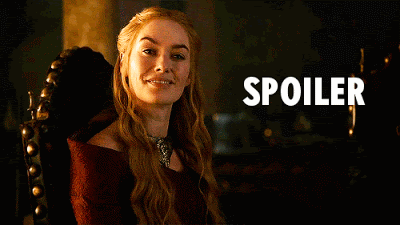
The Characters
Before we get to the ending we should probably lay some groundwork on the issues I had with Attack on Titan, even before it all went bad. Foremost among these issues were the characters. Don’t get me wrong, there are some great characters in Attack on Titan – Jean is by far the best character of the main cast of heroes, Reiner is such a compelling and tragic character, Gabi has a strong character arc (which is one of the few bright spots in the last 40 chapters), Erwin Smith is a good example of a morally-complicated leader and Captain Levi is just cool. The story itself mainly centers on Eren Yeager and his two childhood friends, Mikasa and Armin, but unfortunately Eren is a generic, boring anime protagonist. You’ve seen this kind of protagonist before, someone whose sole characteristic is a philosophical opposition to some external force which is further fueled by a defining, tragic event. In the early parts of the manga his character entirely revolves around wanting to kill the titans and save humanity and this is fine for this kind of story, if not particularly interesting. I’ll cover more of Eren’s character development as we go along, but the main thing to know for now is that the series is centered on a rather shallow character.
Then there’s Mikasa, who initially seems like she’s going to be a total badass. She’s extremely capable, the best fighter in her class in every category, but is emotionally distant. Unfortunately, her character revolves entirely around Eren to the point of being ridiculous. Seriously, when she is told that Eren was killed by titans, she straight-up tries to commit suicide and almost gets herself killed several times trying to protect him. Why is she like this? Well, turns out that her parents were killed and she was kidnapped by robbers, but then Eren came along and fucking stabbed them to death and then told her to stab the last one to save him, so she believes she owes him her unending devotion (even though, y’know, she saves his ass several times and he doesn’t return the favour). As a result, Mikasa’s character is constantly kneecapped by being slavishly devoted to Eren, while also being upstaged by Eren at all times in the process. To make matters even worse, Mikasa also has the indignity of being upstaged twice, because as the stone-cold badass she occupies the same role in the story as Captain Levi. As soon as Levi gets introduced, every time something badass needs to be done Levi gets to do it, leaving Mikasa as Eren’s over-glorified bodyguard for the rest of the series. It sucks, and to make matters worse, it’s treated like some sort of revelation towards the end of the story that, oh my God, Mikasa is in love with Eren! And then we discover that Mikasa’s talents aren’t because she’s just a badass, it’s actually because her family were experiments infused with the strength of titans… and also because she’s Asian. I’m serious, if you thought Midichlorians were the stupidest demystification in fiction, you clearly haven’t read Attack on Titan. As if that wasn’t enough, it’s also implied that Mikasa rejecting Eren turns him into a genocidal maniac in the series’ ending. It definitely comes across to me like this is the intended reading, but even if it isn’t, it’s self-internalized by Mikasa and is just another shitty development for this wasted character. Oh and worst of all? One of the last panels in the series is Mikasa kissing Eren’s severed head WHAT THE ACTUAL FUCK!?!?!
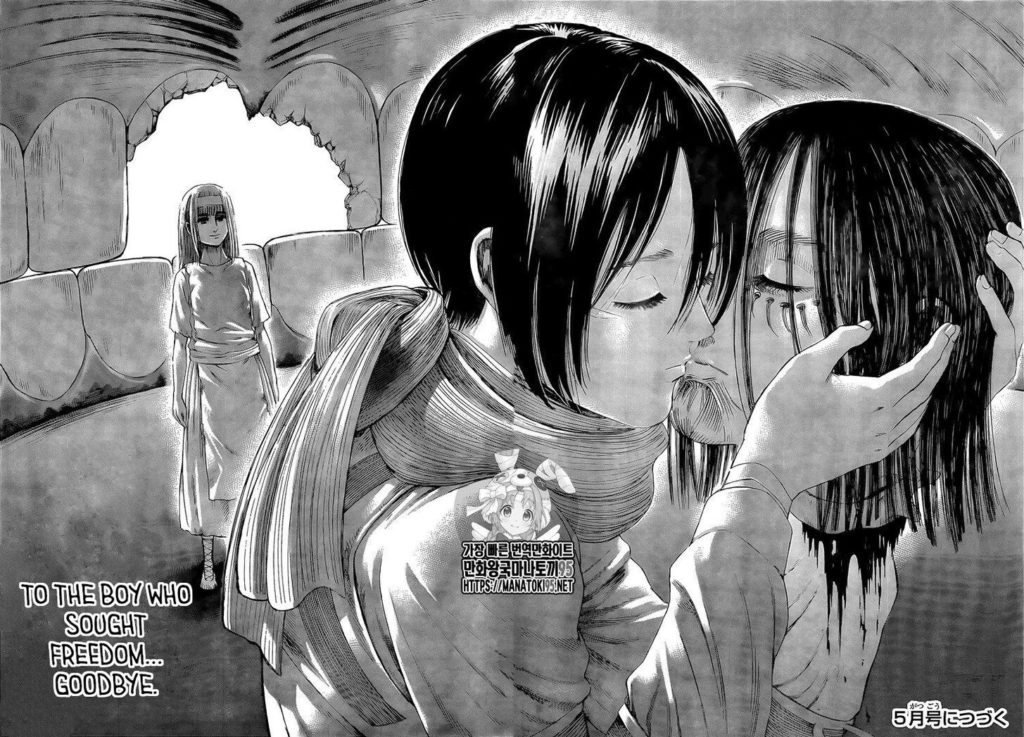
Armin, on the other hand, is easily the best character of the main trio. He isn’t physically impressive, describing himself as weak and useless on several occasions. However, he has a sharp mind which gets the characters through many dire situations and he draws strength from his friendship with Eren and Mikasa, while inspiring them in turn. The main characters manage to survive impossible odds because of Armin’s keen wit on several occasions, showing how invaluable he is to the survey corps. In perhaps the most climactic arc in the whole series, the retaking of Shiganshina district, Armin’s character arc hits its peak. The survey corps are nearly wiped out by a trap, but Armin’s strategic mind and his deep friendship with Eren are what wins the day, as he sacrifices himself to allow Eren to defeat the Colossal Titan. It’s a heartbreaking moment and a perfect death for the character, showing the pyrrhic cost of victory with the decimation of the corps and the sacrificial death of Commander Erwin Smith… but then, in perhaps the first example of Isayama committing a cardinal sin with his narrative, he reveals that both Armin and Erwin Smith somehow survived their injuries and are barely holding onto life. Let me lay this out to you so you can truly understand how insane this is – Armin was fucking cooked to death by the Colossal Titan, covered in full body burns (not to mention that he probably burned out his lungs in the process). This makes for a very intense chapter where the surviving characters fight and argue over which of these character should be healed (they happen to have a serum which will resurrect one of them and give them the powers of the Colossal Titan). They ultimately decide to save Armin, a decision which haunts him as he feels unworthy of being saved instead of Erwin Smith. This could have made for a fantastic new character arc in the latter-half of the narrative… except that Armin does nothing of consequence for the rest of the story (with the one exception being that he blows up a fleet of ships with his titan powers, but it’s not like this actually has any bearing on the plot). I’m serious, this genius character who had carried the heroes to victory several times up to this point gets resurrected and then does absolutely nothing of value for the rest of the story. I should also point out that the latter-half of the narrative revolves around several conspiracies and involves trusting clearly-untrustworthy characters. You’re telling me that Armin couldn’t do a goddamn thing to unravel any of these plots? Oh wait, that would have inconvenienced Isayama’s narrative, that’s why they neutered Armin. But… why even bother resurrecting him at all at that point? I’m serious, he had a fantastic death, just let him die instead of dragging out his character as a shadow of his former self.
The Ending
So, how exactly does the last third of Attack on Titan drop the ball so badly? Well, it all starts with a sneak attack by Eren on the nation of Marley. Marley are attempting to get support for a global coalition to wipe out Eren’s people, the Eldians living on the island of Paradis. The Eldian bloodline are the only ones capable of turning into titans and they are viewed as monsters because of this, and because in the past the Eldians had conquered the world and committed atrocities which they are still hated for. At the time of the story, Eldians are a ghettoized and demonized people, used as weapons of war by Marley through forced transformation into titans, with the only “free” Eldians having isolated themselves behind their walls on Paradis for nearly one hundred years now. So how does Eren react to this call to commit genocide against the people of Paradis? Why, he gives them all the excuse they need to go to war with them by becoming a fucking terrorist and attacking the public gathering of nations!!! Might I add that this declaration of intent was a huge public event, with dignitaries and civilians from all around the world gathered together and caught up in the crossfire as Eren rampages through the city. His actions force the other people of Paradis to act as well, causing a gigantic titan fight right in the middle of a city and leading to the aforementioned destruction of the Marley fleet by Armin in an attempt to debilitate their military response.
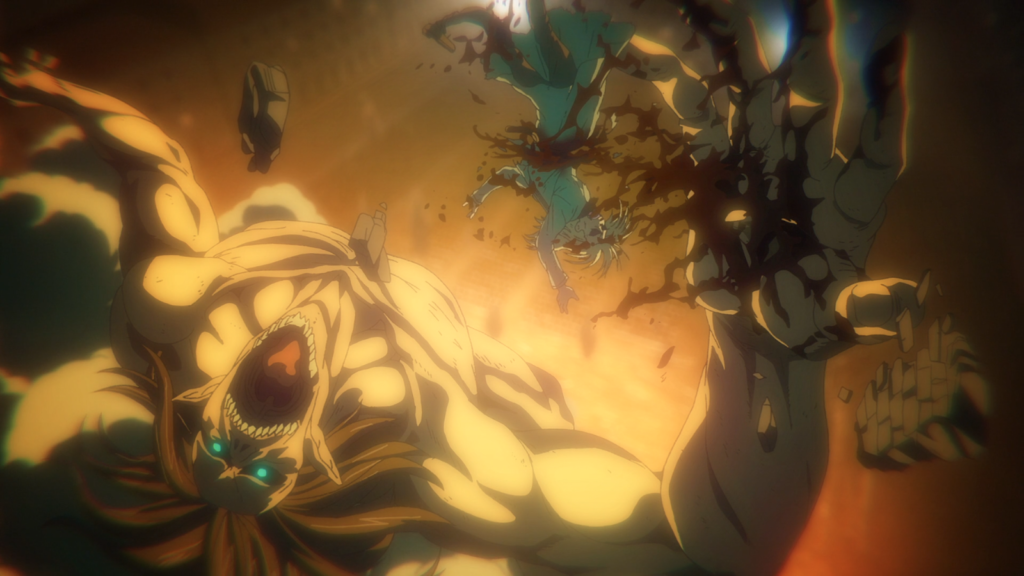
Why does this moment bother me so much and why does it mark the point where Attack on Titan nosedives in quality? Well, I believe that the issue here comes from the way that Eren’s character is handled throughout the story to this point. At the outset of Attack on Titan, Eren makes all sorts of bold declarations about how he’s going to kill all the titans, but in his very first mission his blind rage gets him consumed and seemingly killed until it turns out that he’s secretly had titan powers all along. He then spends the next several volumes trying (unsuccessfully) to understand and get control of his titan powers. During this time, he learns that he cannot just act as he wishes to, he needs to trust his allies who see the bigger picture. Then during the coup storyline, Eren gets kidnapped and spends most of the arc sidelined. Finally, during the retaking of Shiganshina, Eren does a lot of the fighting but he’s not really making the decisions, by this point he’s just following orders to save humanity. As you may notice, in addition to being shallow and boring, Eren is a passive protagonist, which is a lethal combination. Whenever I see people saying stuff like “Eren is so cool!” or “Eren is a chad!” my first response is “…seriously?” What Mandela Effect universe did they come from? This makes Eren’s sudden turn into being an active antagonist in the final third of the story so jarring and unconvincing – it just doesn’t make sense given the trajectory of the character up until that point. Those Game of Thrones season eight comparisons don’t end at how bad the ending is, this sudden heel-turn by a major character is a big reason why the ending is so unsatisfying. It’s not just that Eren attacks Marley either – after touring other countries he decides to wipe out the freaking world’s population in order to save the people of Paradis. WHAT??? In my opinion, Isayama didn’t lay the groundwork for this twist. Having a character say “My friends are the most important thing in the world to me” isn’t justification for “Okay, I guess I’m going to kill everyone in the world now”, especially after he tours the world and sees that there are many good people within it.
Beyond forcing Eren to become a villain “because plot”, the final third of the story has so many stupid twists that it wants us to go along with. The biggest among these is the idea that anyone believed that Zeke (an Eldian working for Marley who has the power to turn into the Beast Titan… and also, Eren’s half-brother) could possibly be working to save Paradis. Like, how did anyone in the survey corps go along with this? The guy was gleefully turning Paradis’ civilians into titans and hurling rocks at the survey corps (which killed Erwin Smith, I may add) a couple volumes earlier, now you’re trying to convince me that anyone believes that he has the best interests of Paradis in mind? The fact that the characters lampshade how stupid this is by talking about stealing his titan powers away from him and yet do not do it does not make this any better. We later discover that Zeke truly does have nefarious plans all along – he’s planning on sterilizing all Eldians the world over, killing them all off in about a hundred years and ending all conflict with them… a horrifyingly evil plan which turns out to be preferable to what actually ends up happening…
Then there are the numerous plot twists involving the Yeagerists, a radical faction of Marley defectors and Paradis soldiers who view Eren and Zeke as saviours. This is a huge conspiracy which somehow goes undetected for years, but even within the Yeagerists themselves there are secret sub-factions, some of whom strive towards Zeke’s sterilization plan and some of whom strive towards Eren’s plan of wiping out the world beyond Paradis by releasing the titans within the walls in an event known as “the rumbling”. There are some clever moments within this storyline (particularly the revelation that Zeke has been spiking the soldiers’ wine supplies with his spinal fluid, which creates a ticking time bomb where he can turn everyone affected into a titan at will), but for the most part it is exhausting and pushes the bounds of belief that this conspiracy wouldn’t be uncovered at some point, especially considering how fanatical these Yeagerists are. Thankfully, it all mercifully ends with Eren getting his head blown off by an anti-titan rifle, but just before his brain shuts down he makes contact with Zeke and then sets his plan in motion, beginning the rumbling which leads into the final arc where the main characters have to stop him once and for all.
The final third of Attack on Titan is a good example of the dangers of the mystery box style of storytelling. Attack on Titan absolutely thrives on mystery boxes. What are the titans? What is outside the walls? What is Eren’s father’s secret he keeps locked in the basement? Where did the Colossal and Armoured Titans come from? As the story goes along, and even as some mysteries get answered, new mysteries appear. Why can Eren turn into a titan? Why are there titans in the walls? Why did Reiner, Bertolt and Annie betray the survey corps? How did Eren control the titans that one time? While this kind of storytelling is a big reason why Attack on Titan is such a compelling read, it’s also a big reason why it all feels so deflating in the last third of the narrative, as the mysteries it has been building up either have unsatisfying answers or get thrown to the wayside. One big question I always had was why did Ymir go with Bertolt and Reiner, abandoning Historia (who she is clearly in love with) in the process? What duty could she do that would outweigh protecting Historia and fighting alongside the people of Paradis? Well, turns out, absolutely nothing because by the end we realize she literally handed herself over to the people of Marley to be killed and all she got for it was a promise from Reiner not to kill Historia… whoop-de-fuckin’-do. This is a fairly minor issue in the grand scheme of things, but it’s one that makes repeat readings of Attack on Titan more unsatisfying because Isayama puts twists and mysteries ahead of actual payoff. Another big example of this is Annie, who is revealed to be the Female Titan and encases herself in crystal early in the story to avoid capture. She spends almost a hundred chapters encased in this crystal, the audience tense the entire time, knowing that it’s only a matter of time until she decides to free herself and wreak havoc once more… only for Isayama to finally remember “oh shit, I’m in the end game, better release Annie now!” and have her just randomly escape and join the heroes to take down Eren. It’s a rushed, jarring and unsatisfying payoff which feels like it was done as an afterthought rather than actually planned to go this way. Oh, and just to shit on everything even more, it’s revealed that Eren’s titan power allows him to see into the memories of past and future inheritors of the Attack Titan, meaning that he’s known what was going to happen all along and has been manipulating his past self from the future into making all the misery of the series happen (including killing his own mother, setting the events of the story in motion). Just… holy fucking shit, that is a stupid fucking twist. I literally rolled my eyes and said “Are you fucking kidding me?” when Isayama dropped that steaming load on my lap. Oh, and in the final chapter, it turns out that Eren told Armin about this and that he’s going to massacre the world and Armin thanks him! AND THEN Eren uses his titan powers to ERASE ARMIN’S MEMORY OF THE CONVERSATION UNTIL THE MOMENT OF EREN’S DEATH. Jesus fucking Christ, fuck mystery boxes, fuck “big twists”, just tell me a good story for fuck sake!
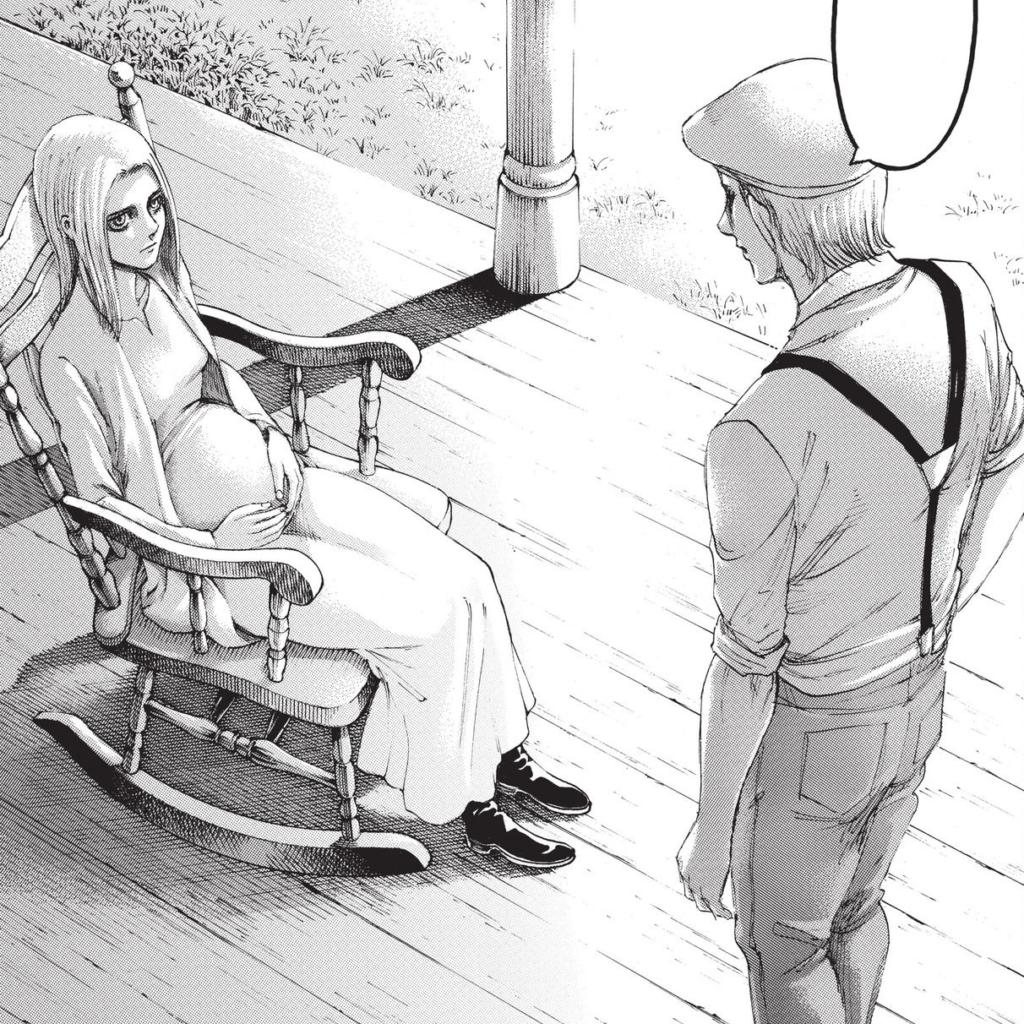
I would be remiss if I failed to mention the most egregious waste of character in the last third of the story: Historia Reiss gets completely shafted. She’s a crucial character during the middle chapters of the story, revealed to be the secret heir to the throne of Paradis and the only one who can change the fate of the nation after a hundred years of oppressive rule. The whole point of the survey corp coup storyline is to put Historia in charge of the nation, so surely when they get her in charge something important happens, right? Well… no, not in the slightest. Isayama knocks her up and then sticks her in an orphanage for the rest of the story. I’m not joking, this major character shows up in maybe three or four panels in the entire last third of the story, which is absolutely insane and down-right insulting. Why do this, you may ask? Well, I believe Isayama got high on twists and then wrote himself into a corner. Part of Historia’s importance is that, as a royal descendant, she is capable of unlocking the power of the Founding Titan, which is possessed by Eren but unable to be used unless he comes into contact with a titan of royal descent. There are several discussions about turning Historia into a titan in order to use this power for their advantage, so why don’t they do it and give one of the established, main characters something to do after hyping them up during the entire middle-section of the story? Well, Isayama decides to instead reveal that Zeke is secretly of royal descent all along and is already a titan, so he’s capable of unlocking the power of the Founding Titan for Eren and is more than happy to do so. Again, this makes the fact that the survey corps places trust in Zeke even more insane. You clearly can’t trust the guy, kill Zeke and transfer his powers on to Historia, goddammit! And, again, lampshading this idea and then not following through with it doesn’t make it okay!
As if the ending wasn’t bad enough, it has been revealed that in the soon-to-be-released final volume of Attack on Titan there are going to be additional pages which add onto the ending. The existing ending sees Eren use the rumbling to wipe out 80% of the world’s population before being killed by his old friends in the survey corps in order to stop him. This erases the ability to turn into a titan for all Eldians around the world, meaning that their race can no longer become monsters. They return home to Paradis where the Eldians live in peace thanks to Eren’s sacrifice and it’s implied that Eldians are viewed as heroes who saved the world. It’s a poor ending, but it’s going to get even worse when Isayama shits on it even more by showing a time skip where Paradis gets carpet bombed into oblivion. Goddamn, I guess preventing complete global genocide was the wrong course of action then? I get that this is thematically appropriate – Attack on Titan frequently shows that cycles of violence are inevitable and that people are incapable of uniting, but holy fuck is that a cynical way to end your story. It effectively undoes everything that has happened because none of it matters in the end and, like I said, it makes the lesson “don’t half-ass a genocide, you have to wipe out all of your enemies to secure your future”. Just… it’s a story. I don’t care how pessimistic you are, break the fucking cycle you cynical dickhead!
So… How ‘Bout That Imperialism and Antisemitism…?
I was aware of the commentary about Attack on Titan taking a fascist, imperialist and antisemitic turn in its latter-half, so I was keeping a critical eye out for this while reading. While I feel like some of these hot takes may be a tad overblown, Isayama does weave in some uncomfortable themes which I have a hard time just dismissing away. Up-front, Attack on Titan appears to be staunchly anti-war – from the first volume you have soldiers haunted by the things they’ve seen, the comrades who have been devoured around them, desperate to feel like their sacrifices have any meaning to them (not to mention all of the horrific deaths we witness throughout the series). This would seem to paint war as something to be avoided at all costs, but as the story goes on I get the sense that that’s not really what Isayama is getting at – in Attack on Titan war is portrayed as a horrible thing that is necessary. After all, the while the narrative sympathizes with cadets who want to join the military police to stay as far away from titans as possible, they’re very clearly looked down upon in comparison to the survey corps who will lay down their lives for the good of humanity. Sure, they’re going to die in droves, often painfully and without even knowing their contribution to the betterment of humanity, but it is hammered home several times in the narrative that their sacrifices were not in vain.
In addition to this, war has to be led by great people who can make these sacrifices worthwhile. While there are hints of this early on, it’s stated outright by Armin when Erwin sacrifices dozens of survey corps members to lure out the Female Titan:
“The commander my be a cruel, even evil, man… but I… I think that’s good. Even if it puts his comrades’ lives in danger, he has to envision every possible development and make a choice. Between the lives of 100 of us and those of humanity, behind the walls. […] The people capable of changing things are the ones who can throw away everything dear to them. When forced to face down monsters they can even leave behind their humanity. Someone who can’t throw anything away will never be able to change anything.”
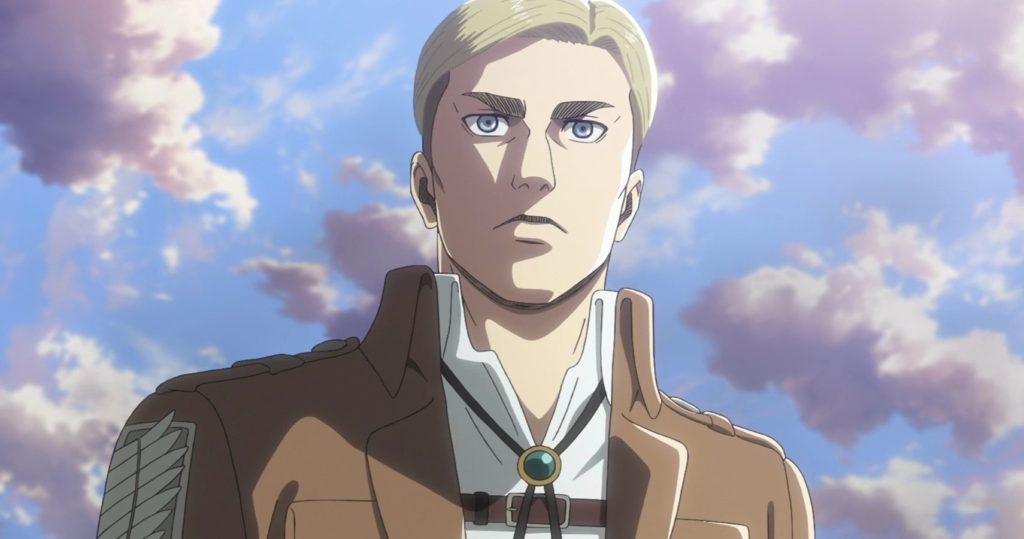
As if that wasn’t enough, Erwin Smith is viewed as the best hope for humanity’s future and there’s a whole chapter that revolves around how the previous commander of the survey corps admitted that “Average men aren’t able to accomplish anything. […] Special people do exist. It’s just that I wasn’t one of them. But I had to lead so many of my comrades to their deaths before I was able to figure that out.” We get a few of these “great men” in the story, most of whom are active military leaders, including Commander Pixis (who is based off of an Imperial Japanese general who Isayama admires). They are contrasted by the weak, selfish elites of Paradis who contribute nothing to society and who are shown to always put their comfort and power above any efforts to better humanity. This comes to a head when Eren’s titan powers are discovered and he is arrested and brought to trial. The elites want him to be killed because his existence threatens their seat of power, while the survey corps want to utilize him as a weapon to retake Wall Maria and save humanity. During the middle-section of the story (particularly during the coup arc), the elites and their cronies do everything they can to stifle the efforts of the survey corps up to and including going to outright war with them when they feel that their threat to their stability is too great. Again, this is the sort of thing that seems anti-authoritarian on the surface – they are, after all, trying to take down this corrupt regime. However, the resulting military coup and emphasis on these “heroes” who should be trusted above all others to reshape society puts that into question. I found the discussion on this Reddit thread about whether Attack on Titan is fascist to be particularly interesting and worth reading for more perspectives on this topic.
Another contentious aspect of Attack on Titan is the way it co-opts Jewish imagery and history in questionable ways. The most glaringly obvious of these is that the Eldians living in Marley are all hated by society, confined to ghettos and forced to wear armbands to identify their race. The parallels are evident, which makes me question whether Isayama gave any thought to the implications that this would bring about. First of all, every Eldian has the capacity to turn into a titan, lending credence to the notion that Jews are secretly monsters and suspicion or hate of them is in some way justified. Furthermore, the Eldians once ruled the world and are accused of committing atrocities around the globe centuries ago, harkening to the anti-Semitic ideas of nefarious Jews ruling the world. Hannah Collins, herself of Jewish descent, describes why this is so problematic within the narrative:
Anti-Semitism, like any form of predjudice, is based in fear, which has no logical root. By making Eldians former conquerors and genetic ‘freaks’ of nature, Isayama provides a plausible rationality to something that should have none. He didn’t have to make Eldians analogous to Jews for us to understand them as victims, and I – like many others – would have felt far more comfortable if he didn’t, to be honest.
It’s the same issue we’ve seen time and time again where racial and political imagery are co-opted in a narrative (Bright and Tom Clancy’s Elite Squad being recent examples of how crass and offensive this can be). At best, Isayama didn’t consider how making Eldians obviously analogous to Jews would lead to some questionable implications. At worst, it belies a racist worldview, which brings me to my next criticism…
Isayama seems to be obsessed with bloodlines in Attack on Titan. Race is, in the real world, largely a social construct, but in Attack on Titan it’s about as “real” as you can get. As I have already said, the ability to turn into a titan is a genetic trait of the Eldian race, but not only that but all Eldians have the ability to have their bodies and minds altered by the royal bloodline. This, of course, adds a whole other hierarchy to these bloodlines, since the royal bloodline possess special powers that are unique to them alone. As I previously mentioned, the fact that Mikasa is Asian is also a weird plotline in Attack on Titan. It’s revealed that non-Eldians were hunted down in Paradis since they are immune to the royal family’s memory-altering powers so the fact that Mikasa is Asian is made out to be a big deal that makes her special. In addition, her status as a member of the Ackerman family also provides her with the genetically inherited ability to be a really fuckin’ good fighter… again, it’s not because she’s just a badass or talented, it’s because of her stupid bloodline. Hell, Eren reveals that Mikasa doesn’t even really love him, she’s just genetically predisposed to protect them due to her bloodline (that said, the truth of this statement is left ambiguous and I personally believe he was lying). All this obsession with bloodline is weird and, in my opinion, narratively lazy on its own, but add it up with the co-opting of Jewish history and the imperialist themes and it becomes harder to believe that Attack on Titan isn’t promoting a pro-fascist worldview (and that’s not even getting into the ending, which promotes genocide as the only way to protect your loved ones).
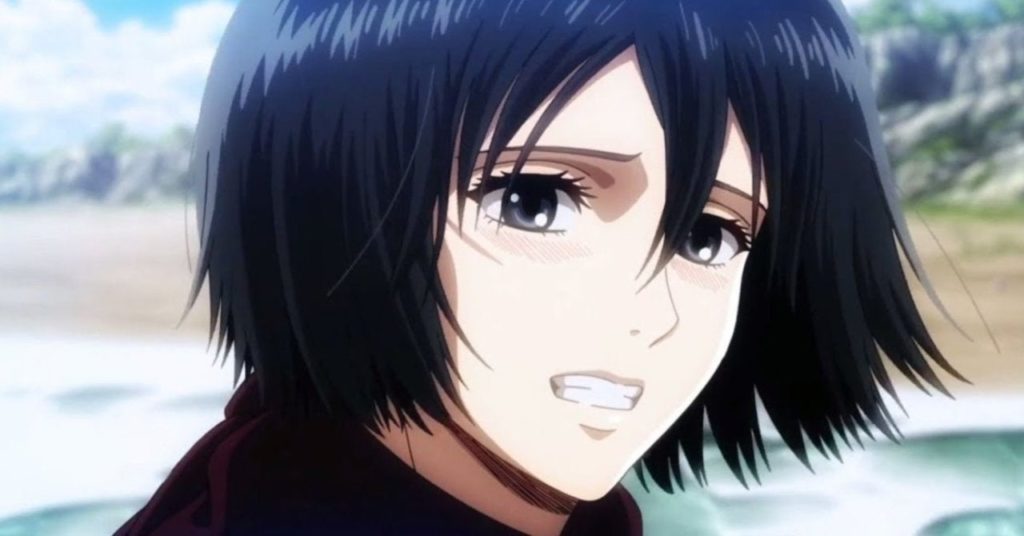
Well If You’re So Smart, How Would You Fix It, HUH?
There really is a lot to like in Attack on Titan – as I said in the intro, I greedily devoured every volume of the manga I could get my hands on because it was such a compelling read that any complaints I had were excusable until chapter 100 came along. There are a lot of things to love up until that point – engaging and compelling plot progression, well thought-out world-building, fantastic art that conveys the sheer speed and force of the setting, and a handful of outstanding characters. I even really like the big twist about the world outside Paradis, but it has to be said that this reveal represents a fundamental shift in the narrative with little direction on where things will go next. As a result of the open-ended nature of this moment, it’s hard to make any substantial changes without having to just write the whole ending out yourself. That said, I do have two scenarios where I would diverge the narrative and make Attack on Titan into a whole other beast.
First of all, the obvious – change chapter 100. I hate the entire notion of Eren becoming a terrorist and bringing the wrath of Marley down on the people of Paradis (not to mention the subsequent stupid twist with Zeke, the Yeagerists, Rumbling, etc). It only really happens because of Isayama’s cynical worldview, but it rings false to me. Eren and the survey corps have spent the last hundred chapters talking about how they’re trying to save humanity, so when he finds out that humanity is doing fine he just… decides that the people of Paradis are the only actual people who matter so time to flatten the rest of them? Again, I don’t like this villainous turn, it doesn’t make sense to me. So here’s my suggestion for an alternate post-chapter 99 – focus the narrative on war between Marley and Paradis, while the characters try to break the mental trauma of the Eldians living in Marley.
The second place where I would consider diverting the narrative is that Eren should have stayed dead. That first battle with the survey corps was almost brilliant. Having Eren’s boring-ass protagonist schtick end up being a red-herring as he is brutally killed in his very first battle would have been incredible and would have given Armin and Mikasa someone to be inspired by throughout the rest of the narrative. Obviously, this would be a HUGE diversion as it would also take with it the whole idea of titan powers (and we wouldn’t get four or five variations of “oh my God, so-and-so is also a titan!”), the world outside the wall, coups, etc, but it would focus Attack on Titan back to the simplicity of its premise – the bleakness of its world and the actual titan fighting. It doesn’t take too long for Attack on Titan to lose track of the regular titans and instead become more interested in the politicking or special titans, to the point where they barely matter after the first dozen volumes. This change would scale everything back and make for a far more simple narrative centered around that initial premise of the last of humanity killing titans. It would be far more simple, but that’s not necessarily a bad thing and could be far more satisfying in the end. At the very least, it would have been interesting to see how Attack on Titan could have turned out if it didn’t get immediately bogged down with typical anime bullshit.
I think that what’s so frustrating about Attack on Titan is that it has left itself effectively unsalvageable. Like, look at it this way – The Rise of Skywalker sucks but at least The Last Jedi is a good enough open-ended, cyclical conclusion that you can happily ignore it. You can’t really do that with Attack on Titan – the whole early narrative revolves around getting to Eren’s basement and once you get there and find out about the wider world you can’t really end there – it begs for a conclusion and unfortunately the one we got was bullshit. If we’re being honest, I still liked the first two thirds of Attack on Titan enough that I’d probably still recommend reading it, but goddamn you need to go in knowing that the ending is really fuckin’ bad.
